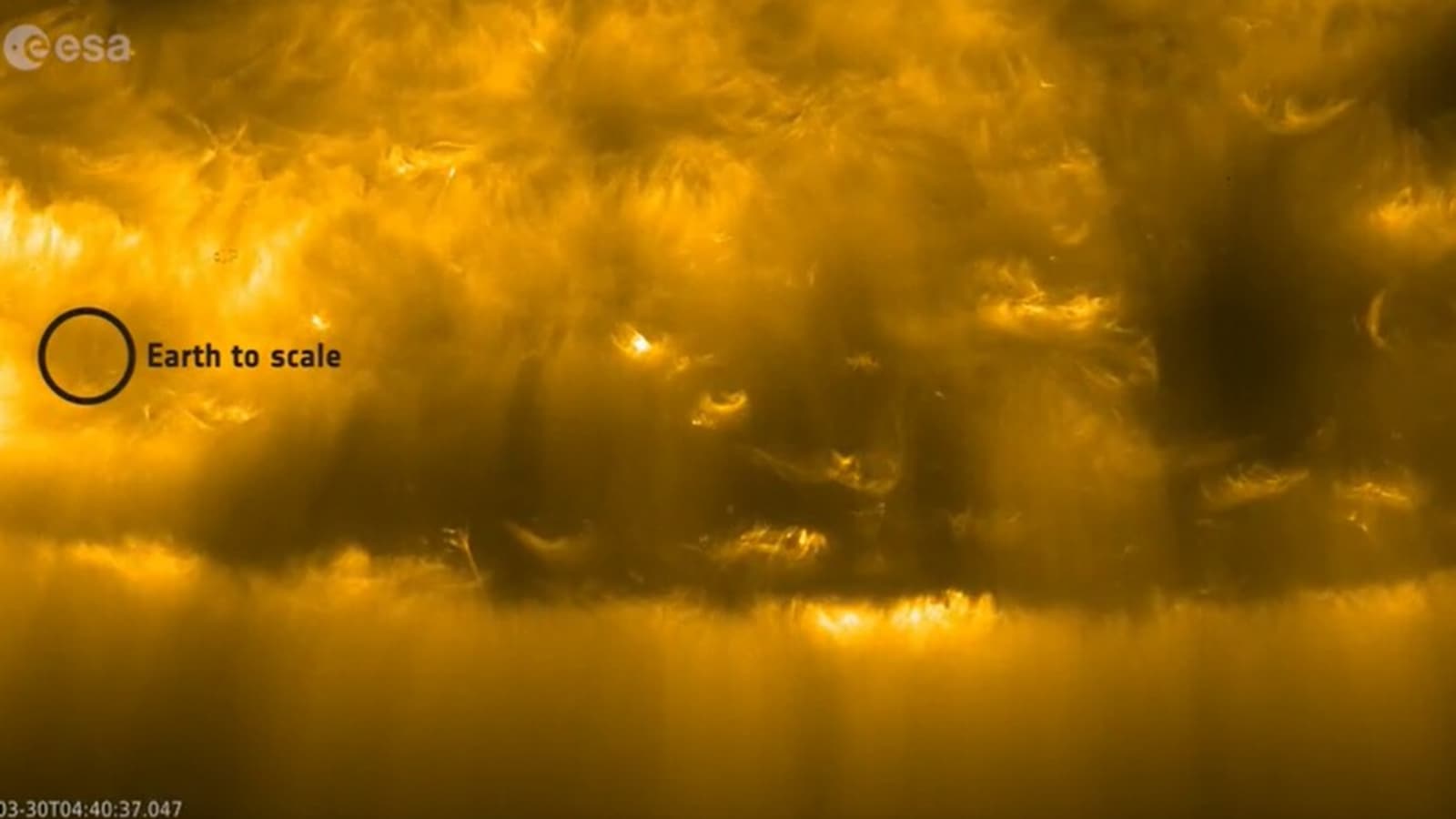Historic! Closest-ever Sun photo captured; Solar Orbiter sees solar flares, ‘hedgehog’, more
The ESA shared the Sun photo captured from the closest-ever point. Solar Orbiter also photographed solar flares, a solar hedgehog and coronal mass ejection!
The Sun has always been that giant spherical source of light for us. Now, the the European Space Agency has shared a Sun photo taken from the closest-ever point! The European Space Agency’s Solar Orbiter took a Sun photo on March 26, 2022, which is the closest so far. The process was not easy! The Solar Orbiter was inside the orbit of Mercury, at about one-third the distance from the Sun to the Earth. The heat was around 500°C shielding the spacecraft but innovative technology helped to dissipate the energy and keep the Orbiter safe and functioning. And the results paid off! The Solar Orbiter also photographed solar flares, solar poles and coronal mass ejection!
“Powerful flares, breath-taking views across the solar poles, and a curious solar ‘hedgehog’ are amongst the haul of spectacular images, movies and data returned by Solar Orbiter from its first close approach to the Sun,” the ESA said in a report. During the close approach to the Sun, the Solar Probe witnessed solar flares and even an Earth-directed coronal mass ejection. It provides a sense of real-time space weather forecasting.
Never seen before details of the Sun
Not just the spectacular view of the Sun, but the orbiter also managed to capture a mysterious phenomenon on the solar pole. Scientists called it a ‘hedgehog’. Though, right now, no one knows what exactly it is or how it is formed. Astonishingly, the mysterious phenomenon has twice the diameter of the Earth. The study will also pave the way for the 11-year long solar cycle and solar activities during the solar cycle. By a rare chance, the spacecraft was hit by a Coronal Mass Ejection on March 10. This provided a unique opportunity to observe the conditions of the solar wind and solar flares.
Well, now, the Solar Orbiter is preparing for and even closer approach than ever to its destination. “We are so thrilled with the quality of the data from our first perihelion,” says Daniel Müller, ESA Project Scientist for Solar Orbiter in the ESA report. “It’s almost hard to believe that this is just the start of the mission. We are going to be very busy indeed.”
For all the latest Technology News Click Here

